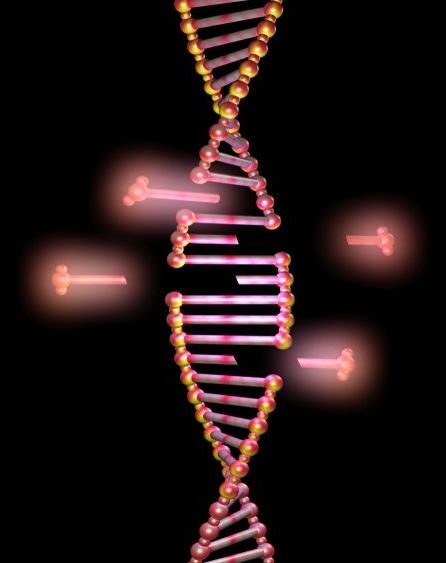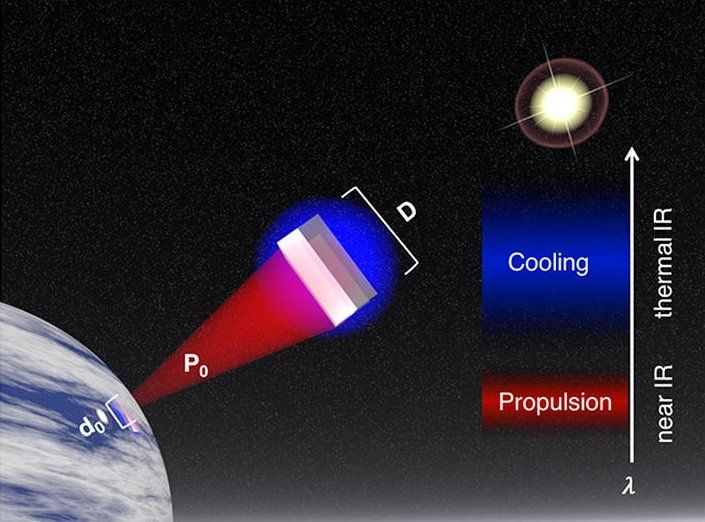Page 9545
Sep 6, 2018
IBM collaborated with the NYPD on an AI system that can search for people
Posted by Genevieve Klien in category: robotics/AI
IBM secretly collaborated with the NYPD to develop a system that could search people by their skin color, according to The Intercept.
Sep 6, 2018
High-Speed Internet Access for Everyone & Why Global Connectivity Is Needed!
Posted by Ankur Bargotra in categories: evolution, internet

In this video, we’ll be discussing why global internet connectivity is essential in ensuring a more prosperous future for all and to assure in many of the new technologies in development today. As well as the ongoing and future initiatives to make this hyper-connected future a reality – sooner than many think.
[0:30–10:00] Starting off we’ll take a look at the evolution of the web, how it has advanced society, assured in new technological advancements and why global connectivity is essential in ensuring everyone can access these benefits.
[10:00–19:10] Following that, we’ll discuss the ground-based initiatives to bring internet connectivity to the world, with Googles Project Loon and Facebooks Project Aquila, as well as the upgrades they will see in the future.
Almost anyone who has looked into the night sky has wondered if we could ever travel to the stars. Today, for the first time in history, we might be only decades away from sending a spacecraft to a star, reaching it within the 21st century. Here, Andreas Hein looks into the possibilities and challenges associated with getting to the stars and asks if humans will ever set foot on an exoplanet.
Flying to another star is incredibly difficult, first and foremost due to the distances involved. Imagine for a moment that the distance between our Sun and the Earth is one metre. The Sun would be the size of a grain of salt on this scale. Still, the closest star to our Sun, Proxima Centauri, would be more than 265 km away. At this scale, the farthest human-made object, the Voyager 1 probe, would be at a distance of about 141 metres from the Sun, increasing its distance by about 3.6 metres per year. In reality Voyager 1 flies at an astonishing velocity of 17 km/s; at this velocity, a flight to Proxima Centauri would take about 75,000 years. This timescale sounds hopeless but it does also mean that, in principle, we can already send spacecraft to other stars. Voyager 1 is heading towards the star Gliese 445 and Voyager 2 towards Sirius.
When we talk about interstellar travel however, we commonly mean that we can reach another star within an acceptable timeframe. What is an ‘acceptable timeframe’ though? The team that designed the Daedalus spacecraft, a hypothetical fusion-propelled interstellar probe, argued that an acceptable trip duration would be about the working life of a scientist, roughly 50 years. Breakthrough Starshot, an ongoing project for laser-propelled interstellar probes, is aiming at 20 years to Proxima Centauri.
Sep 6, 2018
Laser-powered-drones may beat endurance hurdles
Posted by Bill Kemp in categories: drones, military
Hmm. Drones that can be recharged by a laser. So how long could they fly before having to land? How about “never mind”? We can look forward to seeing this idea in action. New Scientist had a story on September 3 that the US Army was making a laser-powered drone to beast endurance hurdles.
The system in mind involves a laser shot from the ground that can power up a military drone mid-flight.
The Daily Mail said that this laser system would be beaming power to photovoltaic cells on the drone, and Futurism said that “The key is hitting a photovoltaic cell on the drone, which then converts the light from the laser into electricity. The Army hopes to be able to do this from up to 500 meters (.31 miles) away.”
Sep 6, 2018
Administering Gene Therapy Without Triggering Immune Response
Posted by Nicola Bagalà in categories: bioengineering, biotech/medical, genetics
A new potential method to administer gene therapy without triggering an immune response.
Scientists at Stanford University School of Medicine managed to administer effective gene therapy in mice without triggering an autoimmune reaction. The research, led by Dr. Peggy Ho, Ph.D., was published in the Proceedings of the National Academy of Sciences [1].
Study abstract
Continue reading “Administering Gene Therapy Without Triggering Immune Response” »
Sep 6, 2018
You Only Live Twice
Posted by Zoltan Istvan in categories: biotech/medical, life extension
An in depth print cover story out on life extension by Forbes Africa—probably destined to become one of the main go-to articles for people on the continent seeking info on the topic. Myself, Aubrey de Grey, and others are featured in it. Excited to see #Africa join the race to overcome death and disease:
Science is pumping in billions searching for solutions that will help humans live longer – and better – and one day even indefinitely.
Sep 6, 2018
Nanophotonic light sails may travel at relativistic speeds
Posted by Klaus Baldauf in categories: energy, space
One day in the not-so-distant future, light sails may hurtle through space at speeds of around 20% of the speed of light (or 60,000 km/sec), propelled not by fuel but rather by the radiation pressure from high-power lasers on Earth. Traveling at these relativistic speeds, laser-powered light sails could reach our nearest neighboring star (other than the Sun), Alpha Centauri, or the nearest known potentially habitable planet, Proxima Centauri b, in about 20 years. Both objects are a little more than four light-years away.
Sep 6, 2018
How olive oil and sleep could stave off heart attacks and strokes—new study examines plasma protein’s role
Posted by Lilia Lens-Pechakova in categories: biotech/medical, food
A new research discovered the mechanism behind the positive effect of consuming food rich in unsaturated fats. The role of the plasma protein- Apolipo IV as an inhibitor of aggregation of platelets for the diminishing occurrence of heart attack, stroke, atherosclerosis was established.
Foods high in unsaturated fats may protect against cardiovascular disease, and new research published today in Nature Communications has uncovered why.
Apolipoprotein A-IV, known as ApoA-IV, is a plasma protein. Levels of ApoA-IV increase after the digestion of foods, particularly foods high in unsaturated fats, such as olive oil. Higher levels of ApoA-IV in the blood have been reported to be associated with lower rates of cardiovascular disease.
Sep 6, 2018
What Are the Biggest Problems Facing Us in the 21st Century?
Posted by Derick Lee in categories: futurism, terrorism
In his fascinating new book, “21 Lessons for the 21st Century,” the historian Yuval Noah Harari creates a useful framework for confronting these fears. While his previous best sellers, “Sapiens” and “Homo Deus,” covered the past and future respectively, his new book is all about the present. The trick for putting an end to our anxieties, he suggests, is not to stop worrying. It’s to know which things to worry about, and how much to worry about them. As he writes in his introduction: “What are today’s greatest challenges and most important changes? What should we pay attention to? What should we teach our kids?”
In “21 Lessons for the 21st Century,” Yuval Noah Harari’s latest book, the historian takes on everything from terrorism to inequality.

















